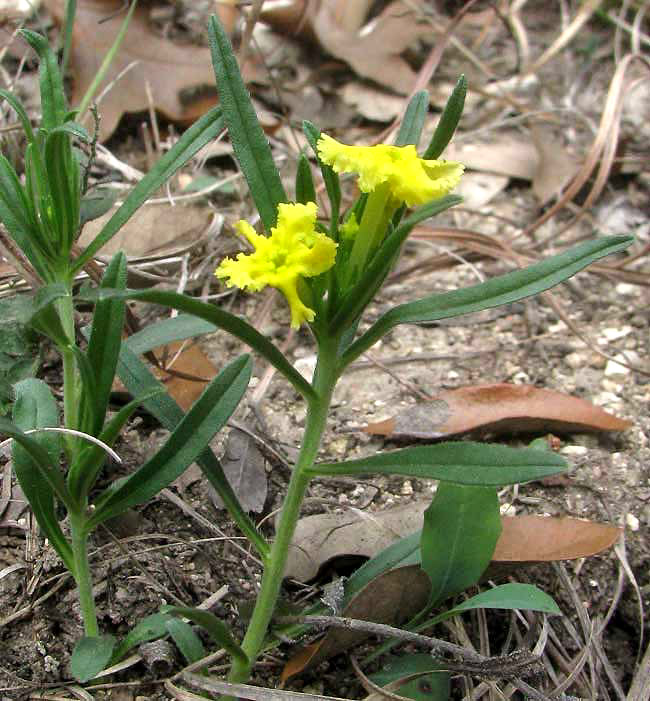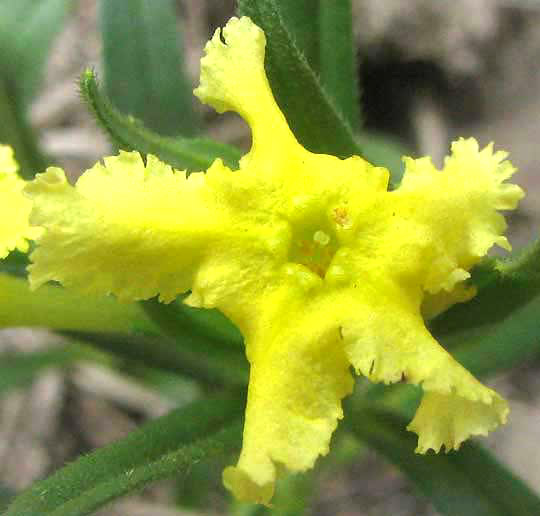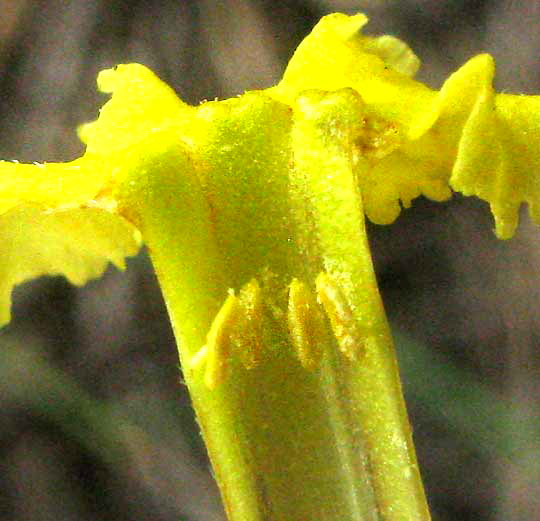Excerpts from Jim Conrad's
Naturalist Newsletter

page March 10, 2013 Newsletter issued from the valley of the Dry Frio River in northern Uvalde County, southwestern Texas, on the southern border of the Edwards Plateau; elevation ~1750m (~5750 ft); N29.62°, W99.86°; USA
STONESEED FLOWERING
A little wildflower about four inches high (10cm) has begun flowering with its trumpet-shaped, yellow blossoms, as shown above. A view of the flower's face showing its crinkly corolla lobes and a pair of spherical stigmas at the mouth appears below:

The English name most commonly associated with this pretty herb seems to be Narrowleaf Stoneseed, but it's also known as the Narrowleaf Gromwell, Fringed Puccoon, Narrow-leaved Puccoon and Plains Stoneseed. It's LITHOSPERMUM INCISUM, and it occurs across most of North America's central and western regions, into arid northern Mexico. It's described as preferring dry, sandy, clayey or loamy soils, but here I find it only on thin soil atop limestone rocks in the hills.
Narrowleaf Stoneseed is a member of the Borage or Forget-me-not Family, the Boraginaceae. One good field mark for that family is how the flowers' five stamens, which alternate with the corolla lobes, are inserted on the corolla tube, as shown below:

It's much more common for stamens to arise from below the ovary and not be affixed to the corolla like that.
The Navajo are reported to have chewed Narrowleaf Stoneseed root for coughs and colds. The plant's finely powdered leaves, root and stem have been rubbed on the body in the treatment of paralyzed limbs. An infusion of the root has been used for stomach aches and kidney problems. The plant has been eaten as an oral contraceptive, and a cold infusion of the pulverized root and seed has been used as eyewash.